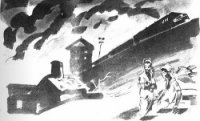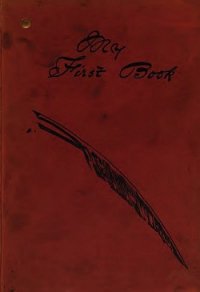Operation Nemesis: The Assassination Plot that Avenged the Armenian Genocide - Bogosian Eric (читать книги полностью без сокращений txt) 📗
The Industrial Revolution accelerated the tempo and scope of war through improvements in transportation and communication. The railroad, the steamship, motorized vehicles, and the telegraph (and later the airplane) allowed military leaders to deploy troops over extensive territory with unprecedented speed. Not only could soldiers and supplies be moved quickly, but so too could local populations. Modern warfare set in motion vast flows of refugees and displaced people, many of whom died for the simple lack of a safe haven.
Information itself became an adjunct to war, as newspapers—the “mass media” of the nineteenth century—proliferated. The journalists of the era endowed nations with personalities and intentions, portraying them as willful actors who were healthy or unhealthy, peaceful or belligerent, who flourished or sickened, had appetites and diseases, made enemies or friends. As World War I began, headlines typically characterized each nation as a sentient being imbued with intention: “Austria Has Chosen War”; “China Fearful of Japan War Moves.”1 Tsar Nicholas I had famously labeled the Ottoman Empire “the sick man of Europe.”
At the same time, world conflicts were reported as if they were competitions, not unlike modern sporting events, with the intention of rallying the local fans. Sides were “winning” or “losing.” This helped foster nationalism, a new way of thinking that defined a nation by language and culture. When the war in western Europe finally reached its combustion point, many young men (particularly in the West) saw it as an adventure, their appetite for conflict stoked by reports of wars on every continent.
A new breed of assassin appeared on the scene as the deadly accuracy of handguns and explosives improved dramatically. After Samuel Colt’s patent of his revolver in 1835, the semiautomatic handgun became easily available thanks to extensive distribution during wartime. Mausers, Brownings, and Colts were the prized possessions of revolutionaries everywhere. When Alfred Nobel invented gelignite in 1875, bomb making became an art, and bombs became a significant part of the revolutionary arsenal. In 1919 anarchists mailed dozens of dynamite bombs to politicians, editors, and businessmen in the United States. One year later Wall Street was bombed; thirty-eight people died. Political agendas could be advanced in seconds as anarchists and other radicals required only a proximity of a few yards to their victims before pulling a trigger or lobbing a bomb.
The half century prior to World War I was open season on world leaders. Three American presidents, Lincoln, Garfield, and McKinley, were shot to death by assassins. A bullet would end the lives of Prime Minister Juan Prim of Spain, King Umberto of Italy, King Carlos of Portugal, King George of Greece, and Naser al-Din Shah Qajar of Persia. Empress Elizabeth of Austria, President Sadi Carnot of France, and Richard Southwell Bourke, sixth Earl of Mayo, were stabbed to death. Gabriel Garcia Moreno, president of Ecuador, was hacked to death by machete. The killing spree against world leaders reached its climax in 1914, when Archduke Franz Ferdinand of Austro-Hungary was gunned down in Sarajevo by Gavrilo Princip, a Serbian nationalist, triggering World War I.
A small cadre of organized revolutionaries could effect broad regime change. And so assassination became an adjunct to revolution. In 1881 the Russian left-wing organization Narodnaya Volya (The People’s Will) succeeded in assassinating Tsar Alexander II. Thirty-five years later, the Bolsheviks would tighten their hold on Russia by murdering Nicholas II and his extended family. Between 1919 and 1922, the period of the Nemesis murders, there were over three hundred political killings in the German Reich alone.2
In the century before the Armenian Genocide, the Armenian millet consisted of three overlapping groups. In Constantinople and other large cities like Smyrna and Alexandria, the economic and cultural elite flourished. Among these well-to-do were genuinely wealthy families, even men who were addressed as “pasha.” The second group consisted of Armenians living throughout Asia Minor who were artisans and merchants, constituting a middle class of sorts, usually clustered in large towns and cities. This was the milieu from which the assassin Soghomon Tehlirian came. And everywhere in the empire, especially in eastern Asia Minor and the Russian Caucasus, lived the rural peasants, who, subject to the predations of armed Kurdish tribes and endless Ottoman taxation, made up the vast majority of Armenians. Their marginal existence only grew more perilous during the Ottoman period of modernization. By the end of the nineteenth century, massacres were common.
The deep poverty of the eastern vilayets, or provinces, where most Armenians lived, undermined the stability of the region. The inhabitants of these outlying frontier lands endured a medieval quality of life. Rural peasants shared their mud-walled houses with domestic animals. Farmers tilled their fields with makeshift plows and prayed for rain; blacksmiths hammered red-hot iron into horseshoes just as their fathers had and their fathers before them; mothers and sisters worked hand looms, weaving cloth for the home and the market. Shepherds tracked their sheep and goats in the same manner as their ancestors two thousand years earlier. There was no refrigeration, little electricity, and very few motorized vehicles. The brightly colored clothing designating the different millets was washed and beaten on the rocks along streams and rivers, just as it had been washed and beaten for the last twenty generations.
The Industrial Revolution which had radically changed life in Europe barely touched the vilayets beyond the outskirts of Constantinople.3 The occasional presence of a sewing machine or kerosene lamp gave the only hint of the modern world enjoyed by the West. (Both kerosene and Singer sewing machines were imported from America and usually sold by Armenian merchants.) By World War I, only a few telephones (available since the 1890s in the United States) were in use outside the big cities, not even in the larger towns. Telegraphy provided the only long-distance instant communication. No paved roads connected the cities. In fact, cars and trucks were a rarity and railroads almost nonexistent. When railroad track was laid, most of it consisted of unfinished trunk lines leading nowhere. Municipal services were unknown. The government’s main job was to collect taxes and maintain control. No factories existed as the West knew them.
The great cities of the empire—Constantinople, Salonika, Smyrna, Alexandria, and Beirut—all resembled a patchwork quilt of neighborhoods and markets where Muslims, Christians, and Jews commingled and did business. Complex mazes of streets and alleys were crammed with every kind of trade and food production imaginable. Nearby harbors bustled with foreign trade, providing goods for those who could afford them and employment for the poor, who flooded into the great cities. In Constantinople, mansions of the elite rose up along the mighty Bosphorus, itself churning with shipping traffic. Sultans and their families built majestic mosques and rambling parklands, bathhouses and bazaars, often adjacent to the holy institutions. In an era before accurate maps or even comprehensible addresses, these cities were sprawling and mysterious organisms.
Though the territories beyond the great coastal cities could hardly be described as lush, the villages had the potential for natural abundance, especially along the Black Sea and the region known as Cilicia, or “Little Armenia.” Fruit orchards and mulberry, fig, walnut, almond, and olive trees supplied seasonal produce as well as leaves for silkworms. Grapevines provided grapes for wine and bastek (fruit leather), and of course the blanched leaves for dolma. Honey and wax were harvested from the honeycombs of beehives. When irrigated properly, cotton and tobacco grew easily in the sunbaked volcanic soil. Green tomatoes and raw cauliflower were pickled into tourshee. Rose petals were steeped to make rose water. Goats and sheep were milked for yogurt and cheese, then slaughtered for their meat. In every market, piles of apricots, sheaves of mint, cherries, pomegranates, eggplants, and potatoes were piled high alongside overflowing baskets of spices, coffee, and lokum candy.




